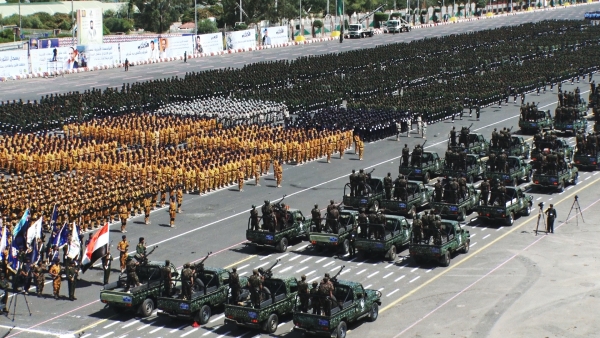Report | Rising Israeli Concerns over Yemen’s Expanding Independent Military Role
Western and Israeli decision-makers and research centers are growing increasingly alarmed by the expansion of Yemen’s independent military capabilities, amid warnings of an imminent escalation in the Red Sea.
They are closely monitoring how Yemen has been affected by the Israeli-American campaign against Iran, assessing Tehran’s preoccupation with its own survival, its temporary withdrawal from supporting allies, and its focus on rebuilding and correcting past mistakes in preparation for another round of conflict.
Some analysts argue that a weakened Iran will scale back military and financial backing for the Ḥouthi movement (Ansar Allah), thereby diminishing its regional influence. Others predict that Yemen itself may become the next battlefield, seen as a direct threat to Israeli security and to navigation through Bab al-Mandeb and the Red Sea. Yet these forecasts proved premature: Sana‘a has maintained—and even expanded—its military operations before, during, and after recent conflicts, demonstrating resilience despite a complex regional environment and looming threats against its infrastructure.
In light of this, a new narrative has emerged—seemingly to justify any future military action against Yemen—claiming that Iran has smuggled enriched uranium to some of its allies, notably Ansar Allah (one Israeli website published aerial photographs of fortified Yemeni sites, speculating they were meant for uranium storage), and that Tehran has transferred advanced missile-technology to Sana‘a.
At the same time, warnings are mounting about the growing threat Yemen poses to Israeli security and maritime traffic. The Jerusalem Center for Foreign Affairs and Security observes that “while Iran opts for direct containment, it directs much of its retaliatory and deterrent efforts to neighboring arenas, foremost among them Yemen,” and notes that Ansar Allah “are repositioning themselves as an independent force that cooperates with Iran but does not answer directly to it. In this configuration, Yemen becomes Israel’s principal arena of attrition and may draw Israel into a deliberate and hazardous confrontation in its southern flank—driven not by choice but by operational and strategic necessity.”
This advanced assessment also exposes the flaws in Western claims that Yemen’s leadership is a mere proxy of Iran, despite clear evidence that Tehran sometimes must accommodate Sana‘a against its own preferences and that the Houthis do not strictly follow Tehran’s diplomatic playbook. Western and Gulf policymakers, fully aware of this reality, nonetheless continue to demand—in political salons—that Iran translate its rhetoric into action by ending military support to Yemen, particularly in arms production.
Putting aside propaganda, a broader consensus is forming that Yemen’s military strength now rests less on foreign aid and more on its accumulated local capabilities: manufacturing and maintaining unmanned aerial vehicles, servicing missile systems, and producing advanced weaponry via a hybrid network of technical adaptation and indigenous factories. Sana‘a has also developed alternative supply routes through nascent ties with countries on the Horn of Africa and along the Red Sea.
Moreover, Ansar Allah have exploited gaps in Red Sea surveillance and leveraged smuggling expertise among tribal networks allied with them in Somalia and Djibouti. Western and Israeli intelligence sources view Sana‘a’s growing rapport with Somalia’s al-Shabab movement as a troubling development—but one that simultaneously reduces Yemen’s dependence on Iran.
Over time, Yemen has proven itself an autonomous actor within the “Axis of Resistance,” meaning that even a temporary cutoff of external support would be insufficient to undermine its military infrastructure. As researcher Eleonora Ardimmagni wrote in a report for the Middle East Institute, “The Houthis have accumulated resources and experiences that render them less dependent on their principal ally and more adaptable to regional shifts.”
It is worth noting that, following every major regional upheaval—from the Israeli war on Lebanon to the fall of the Syrian regime and the assault on Iran—analysts often project wishful scenarios onto Yemen. When these scenarios failed to materialize, some commentators claimed such events would nonetheless inflict psychological blows to the Houthis, causing disarray and fear of opportunistic attacks exploiting Yemen’s economic and humanitarian crises. Yet to date, these forecasts have not withstood the reality of Sana‘a’s sustained military evolution.

